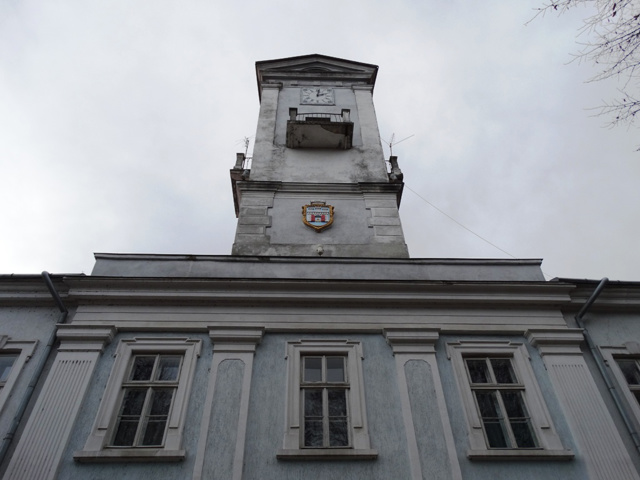Functional temporarily unavailable
General information about Horodok
The settlement with the uncomplicated name Gorodok is located on the river. Vereshchitsa west of Lviv. The international highway E-40 passes through it, leading from Lviv to the Ukrainian-Polish border checkpoint Shegini. The city arose during the times of Kievan Rus. It has been known since 1213 as the Town of Salt, a trade center and stronghold in the Galicia-Volyn principality. Controlled the export of salt to Europe. Having become a part of the Polish state, Gorodok received the Magdeburg Law and began to develop actively thanks to the fact that it became a favorite resting place of the Polish king Vladislav Jagiello (in 1906 it was even renamed Jagiellonski Gorodok). During the War of Independence, the Battle of Gorodok took place here between the Ukrainian-Moscow and Polish troops ...
The settlement with the uncomplicated name Gorodok is located on the river. Vereshchitsa west of Lviv. The international highway E-40 passes through it, leading from Lviv to the Ukrainian-Polish border checkpoint Shegini. The city arose during the times of Kievan Rus. It has been known since 1213 as the Town of Salt, a trade center and stronghold in the Galicia-Volyn principality. Controlled the export of salt to Europe. Having become a part of the Polish state, Gorodok received the Magdeburg Law and began to develop actively thanks to the fact that it became a favorite resting place of the Polish king Vladislav Jagiello (in 1906 it was even renamed Jagiellonski Gorodok). During the War of Independence, the Battle of Gorodok took place here between the Ukrainian-Moscow and Polish troops, and during the First World War, a battle between Russian and Austrian troops took place on the outskirts of Gorodok. The Gothic Church of the Exaltation (XV-XVIII centuries), the temple and cells of the defensive Franciscan monastery (1419) near the castle hill (the castle has not been preserved), the Annunciation Church (1547), the wooden church of John the Baptist (1755) have been preserved. , town hall (1832), water mill (16th century), fragments of historical buildings. The impression is spoiled by the flow of transit transport and the spontaneous market atmosphere associated with it.
Населений пункт з нехитрою назвою Городок розташований на річці Верещиці на захід від Львова. Через нього проходить міжнародна траса Е-40, що веде від Львова до українсько-польського прикордонного переходу "Шегині". Місто виникло за часів Київської Русі. Відоме з 1213 року як Городок Соляний, торговий центр і опорний пункт у складі Галицько-Волинського князівства. Контролювало експорт солі в Європу. Увійшовши до складу польської держави, Городок отримав Магдебурзьке право та почав активно розвиватися завдяки тому, що став улюбленим місцем відпочинку польського короля Владислава Ягайла (в 1906 році навіть місто було перейменоване на Городок Ягеллонський). За часів Визвольної війни тут сталася Городоцька битва між українсько-московськими та польськими військами, а під час Першої ...
Населений пункт з нехитрою назвою Городок розташований на річці Верещиці на захід від Львова. Через нього проходить міжнародна траса Е-40, що веде від Львова до українсько-польського прикордонного переходу "Шегині". Місто виникло за часів Київської Русі. Відоме з 1213 року як Городок Соляний, торговий центр і опорний пункт у складі Галицько-Волинського князівства. Контролювало експорт солі в Європу. Увійшовши до складу польської держави, Городок отримав Магдебурзьке право та почав активно розвиватися завдяки тому, що став улюбленим місцем відпочинку польського короля Владислава Ягайла (в 1906 році навіть місто було перейменоване на Городок Ягеллонський). За часів Визвольної війни тут сталася Городоцька битва між українсько-московськими та польськими військами, а під час Першої світової війни на околиці Городка відбулася битва між російськими та австрійськими військами. Зберігся готичний Воздвиженський костел (XV-XVIII ст.), храм і келії оборонного Францисканського монастиря (1419 р.) поряд з замковим пагорбом (замок не зберігся), Благовіщенська церква (1547 р.), дерев'яна церква Іоанна Хрестителя (1755 р.) , ратуша (1832 р.), водяний млин (XVI ст.), фрагменти історичної забудови. Враження псує потік транзитного транспорту і пов'язана з ним стихійно-ринкова атмосфера.
Сплануй своє перебування у Horodok
What to see and where to go in Horodok
Tourist attractions and museums of Horodok

Town Hall (Museum of Local Lore)
Architecture , Museum / gallery
Gorodok City Hall in the style of classicism was built in 1832 as the premises of the magistrate of Gorodok. The two-storey U-shaped building is topped by a clock tower with balconies, which houses a clock with four dials (2004) and the coat of arms of the city. Previously, the tower was completed by a sharp roof with a weather vane. The Horodok Town Hall building is still used for its intended purpose - the Horodok City Council sits in it. The Horodok Museum of History and Local Lore (2010) is also located on the ground floor. A wide exposition of archeological finds, household items and folk clothing is presented. Separate stands are dedicated to the periods of the Liberation War of B. Khmelnytsky (the battle of Gorodok in 1655) and the liberation struggle of 1918-20 (Volchukhiv operation of the UGA).
Reviews Horodok
Geographical information about Horodok
| {{itemKey}} | {{itemValue}} |
|---|---|
| Region |
Lviv |


